Workshop Report
Over the past years, throughout various conversations, we began to think through the connections and possible relations between artists and consultants. We developed a hunch: artists are purported to hold an important role in a changing society, but are rarely asked for their expertise. At the same time, the consultancy industry is expanding into increasingly differentiated services, with their methods pervading into decision making processes that govern public life.
We believe that productive and critical relations can be drawn between artists' performative knowledge practices, the scores, approaches and prescriptions developed in performative art forms, and the frameworks and methods found in the practices of the consulting industry.

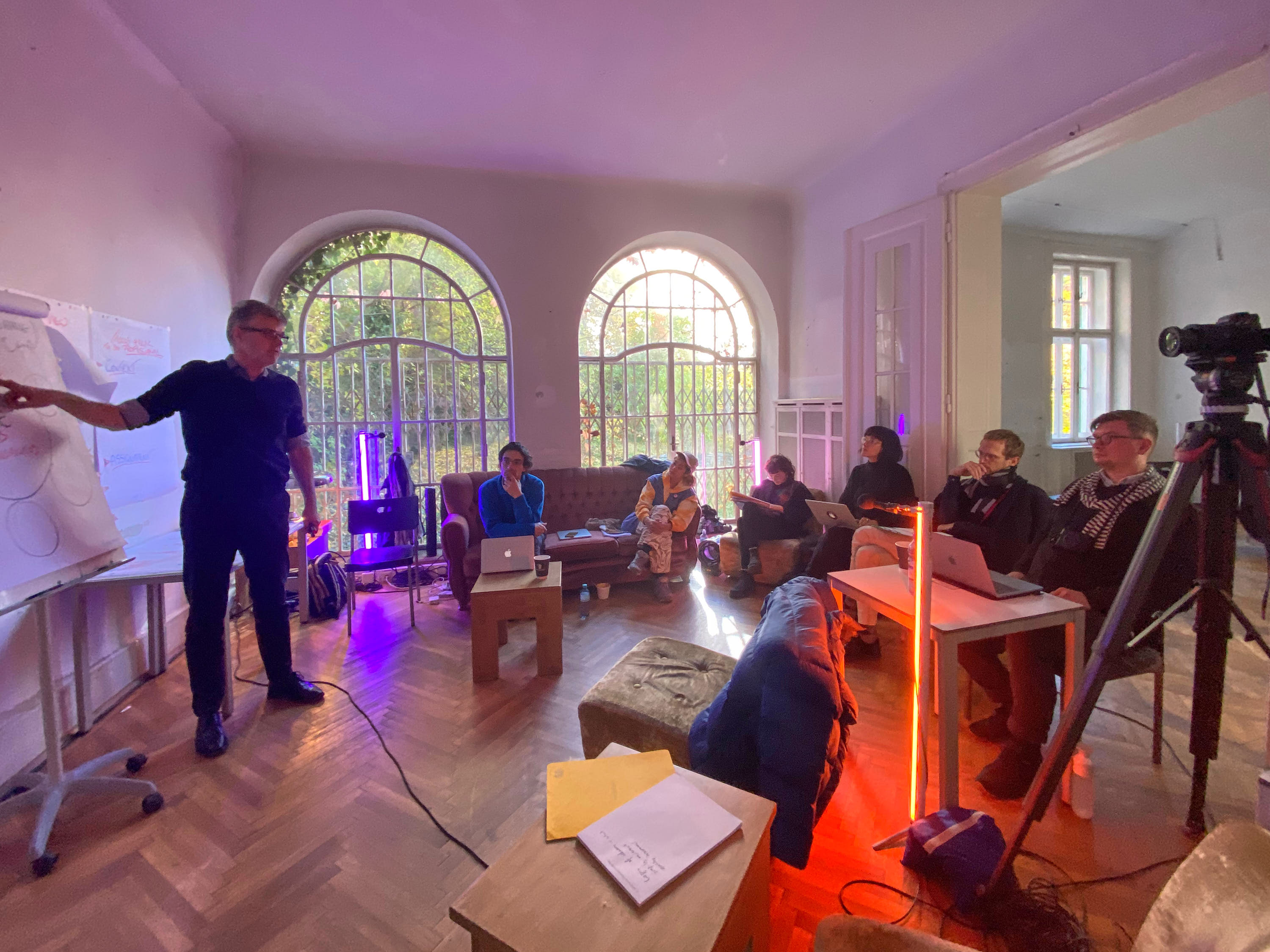
We began to test these ideas and assumptions by hosting a workshop called “Artists Have The Answers?”. It assembled, in a hybrid setting at Villa Schapira, Vienna, and an online meeting, 13 artists – Fabian Faltin, Scott William Raby, Egle Budyvyte, Quenton Miller, memeclassworldwide (Jennifer Scherler, Juan Blanco, Ramona Kortyka), Felipe Castelblanco, Mariana Murcia, Mary Maggic, Miriam Simun, Parsa Sanjana Sajid – with a shared interest and track record in practicing art beyond the the confined space of the institutional and private contemporary art market.
Three workshops during these two days were held by professional business consultants. All workshops shared the same structure, in which the consultants would introduce the frameworks and methods of their consultancy practice through a sort of simulation; by working through these methods with the participants. This allowed participants to experience the performative aspects of these practices before a discussion of their underlying concepts.
The first workshop held by Sabine Fischer was about ideas. She shared the experiences from her research and practice into the logic and economy of ideas.
![]()
Working with clients ideas, she has identified the circumstances that need to be produced for ideas to unfold their full effect: their potential needs must be clearly outlined by effective communication, the clients’ habits need to be challenged for the new-ness of ideas to unfold, and the complexity of ideas lies in the integration with the next bigger idea. Ideas can be identified by having a cause, a solution and a value. Ideas need to be embodied by a host that produces and adapts these qualities during the development of the idea.
Artists are known to create value in very risky ways, and including challenging the value systems that the implementation of new ideas might create.
Consulting practice requires something that is not known in the art field, but makes it attractive to artists, also because of the fact that the client needs to be seeking and willing to change.
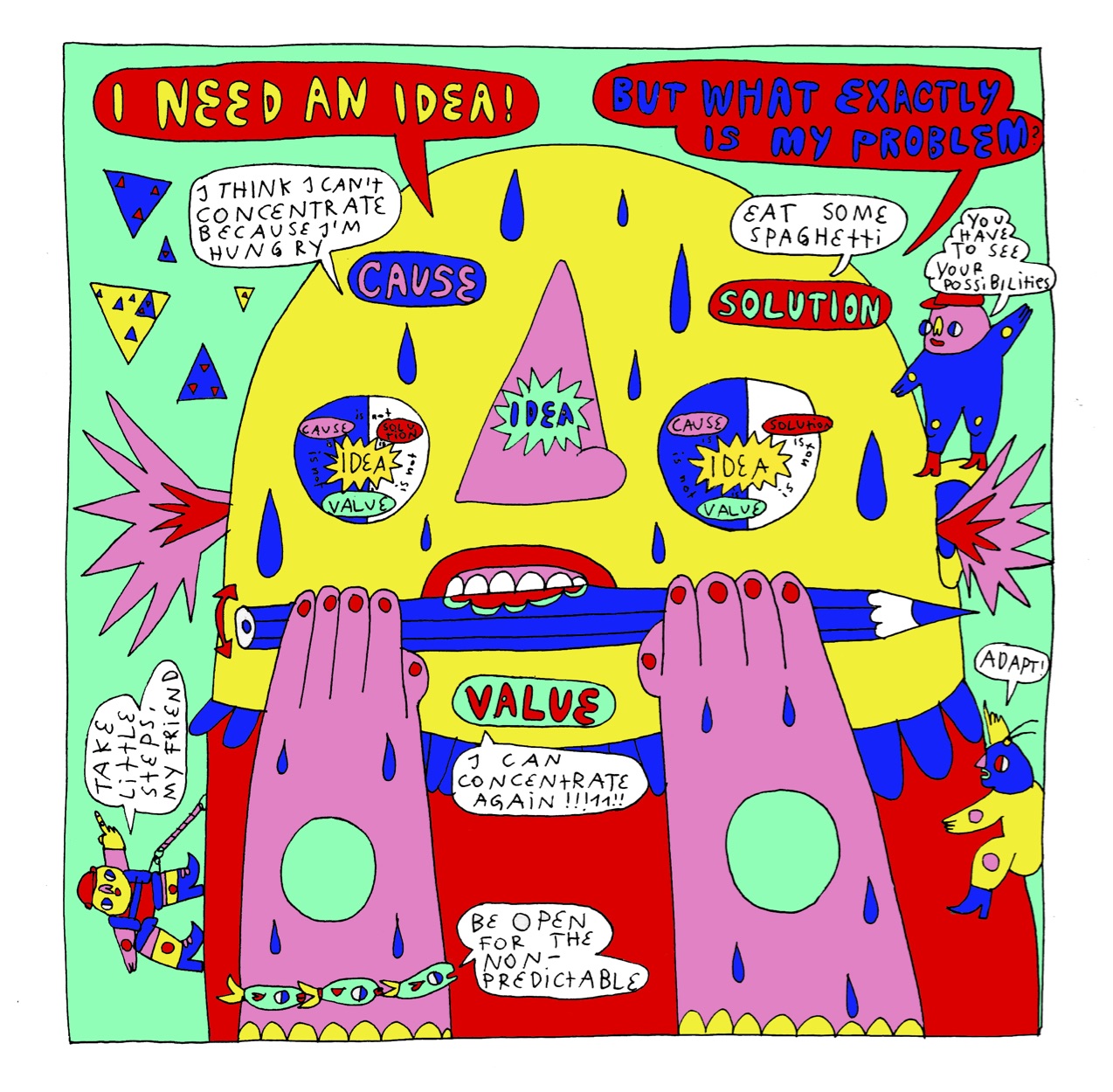
Working with clients ideas, she has identified the circumstances that need to be produced for ideas to unfold their full effect: their potential needs must be clearly outlined by effective communication, the clients’ habits need to be challenged for the new-ness of ideas to unfold, and the complexity of ideas lies in the integration with the next bigger idea. Ideas can be identified by having a cause, a solution and a value. Ideas need to be embodied by a host that produces and adapts these qualities during the development of the idea.
Artists are known to create value in very risky ways, and including challenging the value systems that the implementation of new ideas might create.
Consulting practice requires something that is not known in the art field, but makes it attractive to artists, also because of the fact that the client needs to be seeking and willing to change.
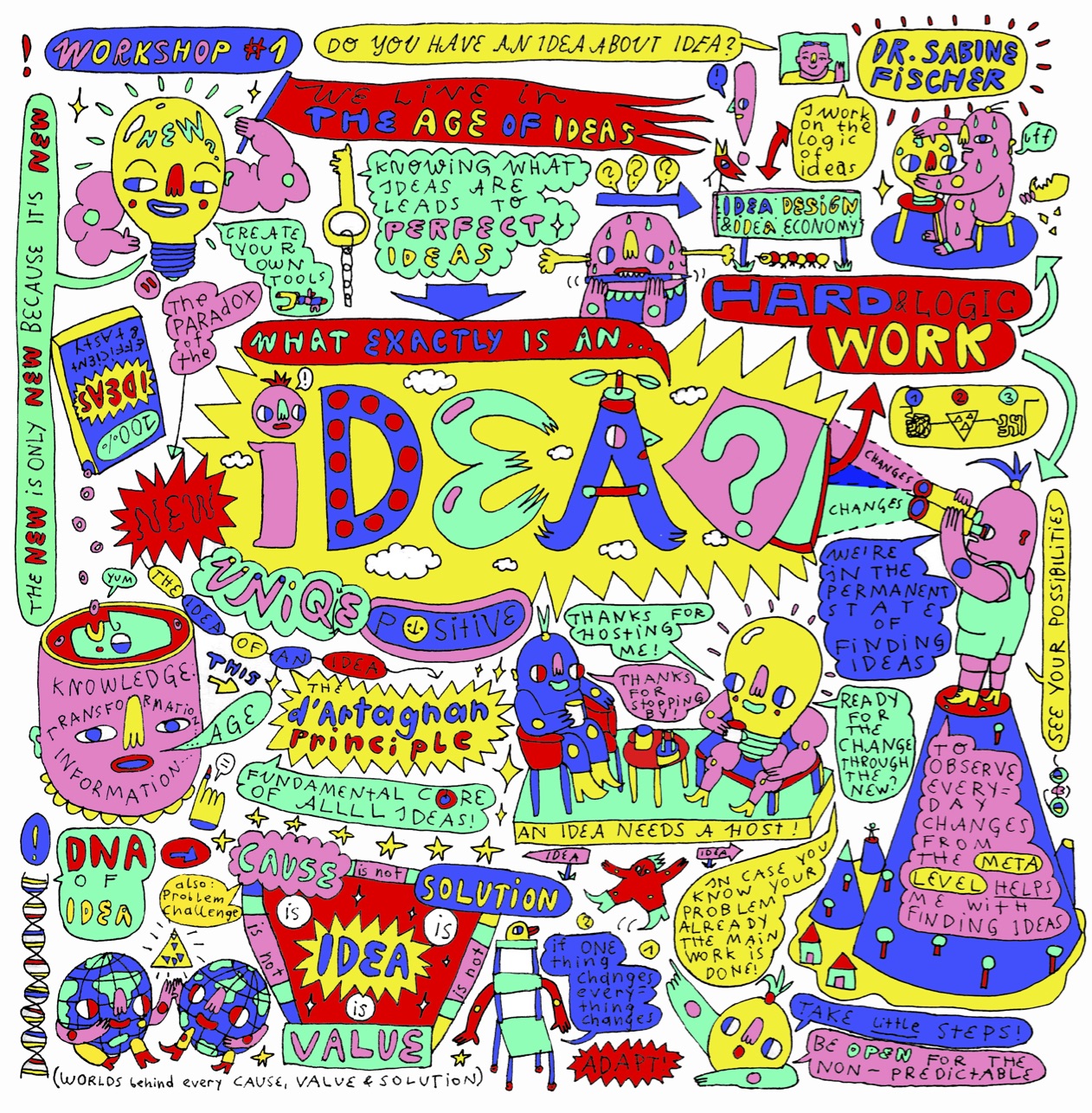
The second workshop by Robert Strohmaier was about consultancy frameworks and loops from his professional practice as a systemic consultant, and his research on the history of consulting paradigms.
![]()
The framework he developed starts with three central elements: that of the role of the consultant (which can be chosen and designed by oneself, but needs to be explicit) and the roles given to the client; and understanding and clarifying of the context of each job, and working within the limits of ones assignment, but in there demand and push for change.
Robert described his view of the world today as “hyperturbulent and chaotic”, which leads to a situation where problems can only be tackled if we look at human group interactions, with a particular focus on the heart and guts. Robert provided an overview of the development of consultancy frameworks, which began as manufacturing optimisation schemes that looked at an organisation as a mechanical device, later integrated notions of cybernetics and self-organisation, and today focuses on the integration of humans with technology, with a special focus on working around purpose-oriented perspectives. Observation is a learned and refined skill that artists develop, which also enables working with clients.
Robert positively challenged the title of the workshop - being a consultant, nor being an artist, is about having the answers, but about empowering the client to develop answers to questions they did not know how to ask.
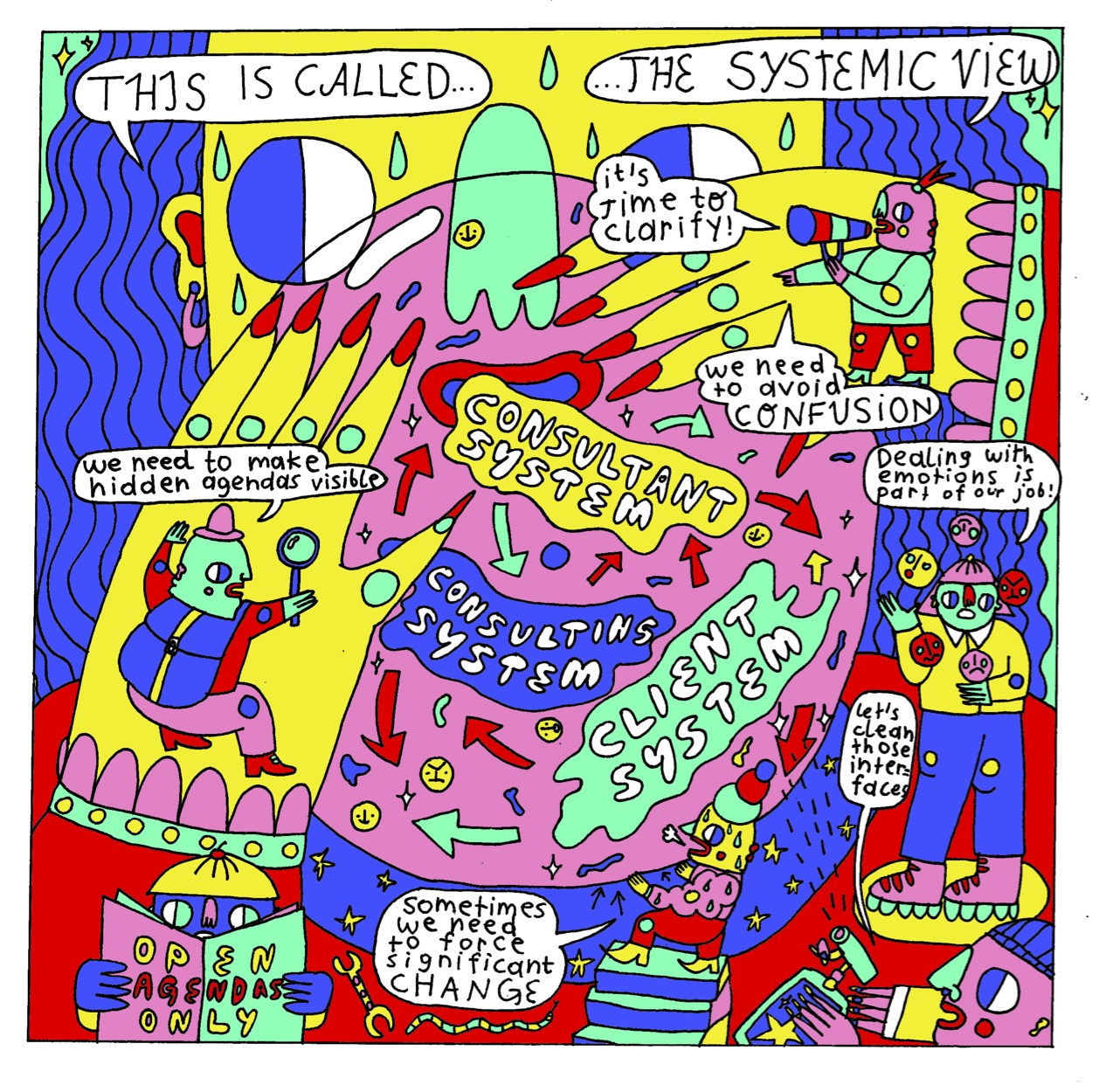
The framework he developed starts with three central elements: that of the role of the consultant (which can be chosen and designed by oneself, but needs to be explicit) and the roles given to the client; and understanding and clarifying of the context of each job, and working within the limits of ones assignment, but in there demand and push for change.
Robert described his view of the world today as “hyperturbulent and chaotic”, which leads to a situation where problems can only be tackled if we look at human group interactions, with a particular focus on the heart and guts. Robert provided an overview of the development of consultancy frameworks, which began as manufacturing optimisation schemes that looked at an organisation as a mechanical device, later integrated notions of cybernetics and self-organisation, and today focuses on the integration of humans with technology, with a special focus on working around purpose-oriented perspectives. Observation is a learned and refined skill that artists develop, which also enables working with clients.
Robert positively challenged the title of the workshop - being a consultant, nor being an artist, is about having the answers, but about empowering the client to develop answers to questions they did not know how to ask.
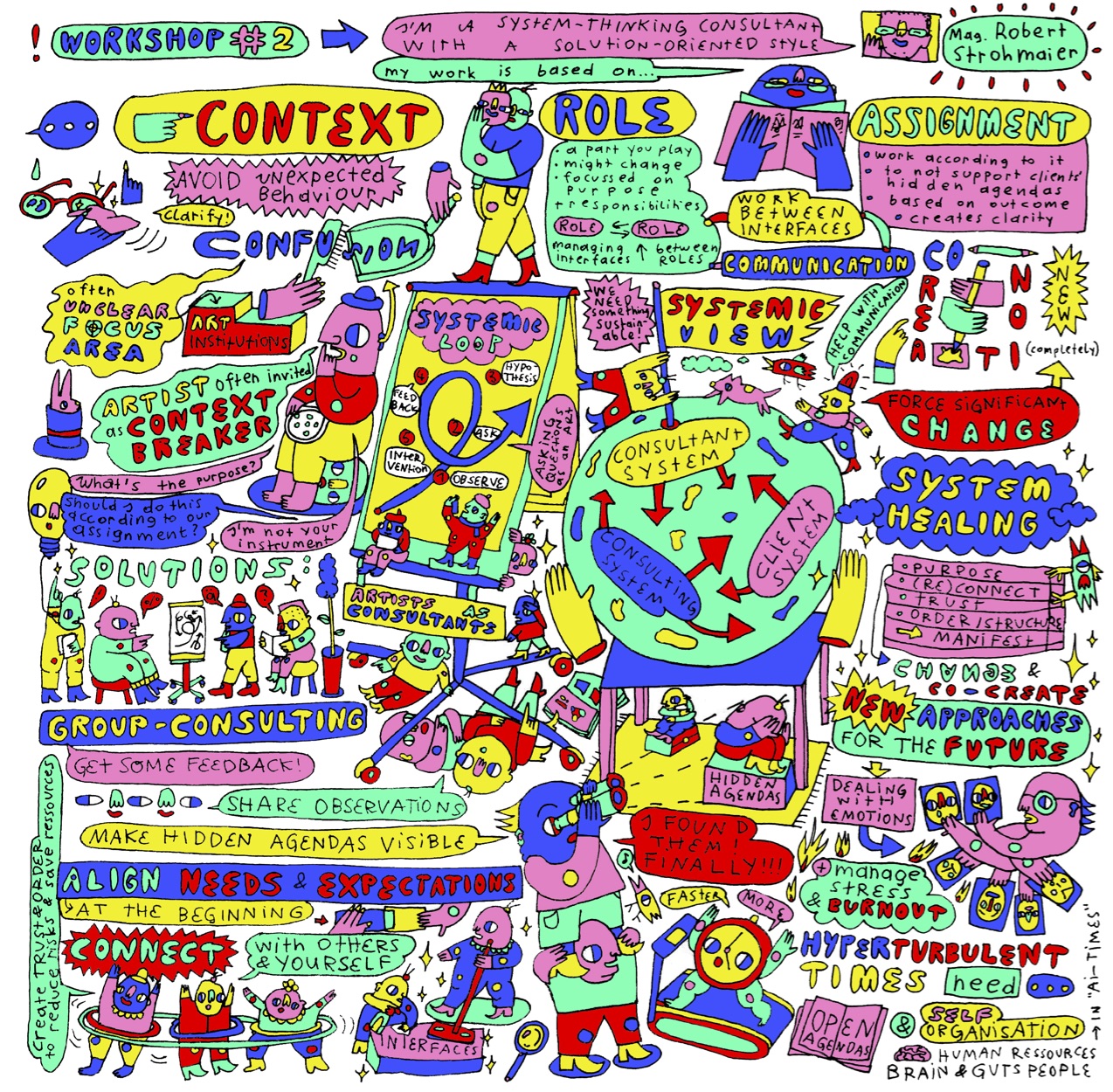
The third workshop by Georg Russegger was about developing the mutual understanding of the stereotypes that artists might have of consultants and that consultants might have of artists.
![]()
Starting with the (contested) phenomenon of “unconscious bias” as a factor in distorting the effectiveness of consulting work, he guided participants through a process of identifying traits and characteristics of both roles.
Consultants are client oriented, complexity reducing, solution-focussed shape shifters who cannot be fully trusted despite their techniques of persuasion and refined but normative style.
The stereotype of the artist as consultant is that of the clever, cheeky, tastefully unrefined, de-, un-, post-everything performative, desire-driven mercenary hacker and public serviant who inspires people to follow their intuition by being somewhat of an oracle that embodies the creativity the industry desires, but is not quite reliable, yet great at delivering interventions.
After this stereotype design workshop and a brief discussion of agile methods, we talked about how further work must be done on developing the role of the artist-as-consultant by studying, reworking, and reframing the language of consulting by developing one's own frameworks and methods.

Starting with the (contested) phenomenon of “unconscious bias” as a factor in distorting the effectiveness of consulting work, he guided participants through a process of identifying traits and characteristics of both roles.
Consultants are client oriented, complexity reducing, solution-focussed shape shifters who cannot be fully trusted despite their techniques of persuasion and refined but normative style.
The stereotype of the artist as consultant is that of the clever, cheeky, tastefully unrefined, de-, un-, post-everything performative, desire-driven mercenary hacker and public serviant who inspires people to follow their intuition by being somewhat of an oracle that embodies the creativity the industry desires, but is not quite reliable, yet great at delivering interventions.
After this stereotype design workshop and a brief discussion of agile methods, we talked about how further work must be done on developing the role of the artist-as-consultant by studying, reworking, and reframing the language of consulting by developing one's own frameworks and methods.

The workshops were concluded by an open space for discussion and co-working among the artists. We used this opportunity to process ideas, formulate questions and sketch prototype frameworks and concepts.
The participants continued to work through their critical reluctance towards the consultancy industry, while at the same time inspired to think about other ways of being part of transformational processes. One group started to work on a consultancy framework which adopted the approach of trinities found in many other frameworks but applied it to the ethical challenges of being an artist as consultant, wondering what agency we would seek, what credentials we can show, and which influence we would like to have.
Inspired by the notion of consultants not delivering answers but only asking questions, another group wrote and performed a spontaneous and tongue-in-cheek framework/manifesto for a radically ANSWER based consultancy method that would disrupt the industry.
Many critical questions were discussed and still remain open. Do artists who work as consultants lose credibility in the art field? What value propositions do artists have as consultants? Can politically conscious artists offer their “services” to optimize a system in which they lose control of their work? Which notion of change and progress is the work of artists-as-consultants based on? And do things that change really ever become different, or do power structures make everything stay the same while change is only superficially demonstrated? The ultimate goal, we concluded, is to seek more meaningful change.
Since the workshops, individual development and prototyping meetings were held with the aim of developing a program of consultancy services and projects offered by the artists. Also regular group meetings are held by the participants of the workshop and invited guests.
The workshop made clear that artists seek to work cooperatively on the challenges we face as a society, and that as artists, we would like to develop sustainable approaches from our diverse skill sets to tackle these challenges. But for this a solid, cooperative infrastructure needs to be built, that supports artists in doing this work through research, theory and organisational practice. The challenge of being an artist-as-consultant is to deliver to clients needs or the situations requirements without becoming solution-oriented yet context-blind. Artists need to co-articulate their consultancy work as being both relevant as legitimate within the self-determined frame of their art practice, but also according to the needs defined by their assignment.

Inviting a multitude of systems to gather in a dance
